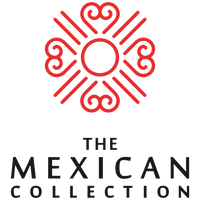The Charm of the Mexican Charro
What is a Charro? Simply put, it is the word used to describe a Mexican horse-rider. The term originated in the central-western regions of the country– primarily in the state of Jalisco.
While similar to a Vaquero (cowboy) and Ranchero (rancher), a Charro is distinguished by participation in La Charrería, an equestrian sport and discipline that is widely considered the national sport of Mexico.

Charros are also easily recognisable by their sombrero de charro, a wide hat decorated with elaborate embroidery. They are also distinguished by their form-fitted shirts and wide decorative neck ties.
The Charrería or Charreada is a traditional horse show that centres around elaborate displays of lassoing, horse-handling, cattle management and riding skills that are part equestrian dressage and part rodeo.

In fact the roots of the famous southern American rodeo can be traced all the way back to the charreada. They both share a love of cattle handling, horsemanship and elaborate display.
The word rodeo itself comes from the Spanish meaning ‘round up’ and even today there are many similarities between the American rodeo and the Mexican charreria.
While many charros are born into the way of life of the Charrería it has also evolved into a modern sport that attracts many urbanites who have no generational ties to the tradition but who wish to return to their cultural roots. For this reason the Charreria is a cherished tradition that is still very much alive in modern Mexican culture.
Unlike other equestrian sports, there is no fame in the Charreria. While costumes and horses are elaborate and expensive, there are no monetary prizes in the sport.
Competitors take part in the Charrería for the joy of working with horses, connecting with the past and of keeping a much-loved national tradition alive.
Charros over time
While charros are now revered as the embodiment of the rich cultural history of Mexico this was not always the case. If anything, the exact opposite was true. Believed to originate from the Basque language the origins of the word charro come from the Basque word txar meaning something bad, or unimportant and not worthy of attention.
From this rather inauspicious start the term charro evolved over time to it’s current incarnation and the journey of the charro from social pariah to symbol of national pride is certainly an interesting one.
The history of the Charro
Horses arrived in Mexico in 1519 with the Spanish conquistador Hernan Cortes and they were considered a symbol of the elite.
As horses and cattle propagated across the county, the indigenous peoples of Mexico were prohibited, on the penalty of death, from riding or owning horses by the Spanish.
However, the mainstay of Spanish life in Latin American were the haciendas and they required the use of horses and hence horse riders to manage the cattle.

Therefore an exception was made by the Spanish for workers on the plantations to be allowed to ride horses for cattle handling purposes. They were, however, forbidden from using the Spanish designed saddles or the clothing of the conquistadores and the resulting style of the leather trousers and wide sombrero that emerged among the cattle handlers and vaqueros was born out of necessity rather than any other purposeful design.
The emphasis on function infused the Mexican riding man with his own distinctive dress that was easily distinguishable from the mainstream Spanish influenced style of the era. The wide-brimmed sombrero kept the sun off his neck and the leather chaparreras (later known as chaps) protected his clothing from wear and his legs from injury.

Over time this informal leather uniform was adapted to better suit the Mexican terrain and climate and a distinctive style of cowboy dress emerged.
There was much rivalry between the large haciendas and the tradition of the charreada grew out of the competitions between the large ranchos in one-upmanship in roping, livestock handling and equestrian skills.
As time passed and society moved away from the cattle ranch model favoured by the Spanish, native Mexicans adapted decorated versions of this leather cowboy style.

Elaborate horse harnesses and saddles emerged, decorated with silver tassels and chamois skins in a show of status and along with these came the formal cotton shirts, fitted leather trousers and silk ties of the riders.
So was born the identity of the charro.
Charros and the Revolution
Charros played an important role during the Mexican War of Independence and formed private militias that fought on both sides of the war.
After independence was achieved in the 1800s, and as the structures and cohesion in Mexican society changed bands of Charros roamed the vast alti plano taking the law into their own hands. The most famous of these groups was Los Plateados, the silver ones, who adorned their reins and saddles with silver and adopted the image of the wealthy elite.
By the mid nineteenth century the president of Mexico, Benito Juarez, was becoming increasingly aware of the need to rein in the power of the charros who had begun to act as unelected local governors and law makers in many parts of the country. He did this by making the charros officials in their own right, legitimising what was essential a band of outlaws.
With this the image of the charro as an outlaw and bandit was transformed in the culture of the time. Instead charros became revered for their customs and dress. The legend of the charro became interwoven with the history of Mexico.

Charros in the modern age
In Mexico the charros are honoured as an ode to Mexican culture and their distinctive dress has been adopted by many national personalities and performers, the most famous being the singer Vicente Fernandez. The golden age of Latin American cinema in the 1930s and 1940s also saw the likes of Pedro Infante, Dolores del Rio and Jorge Negrete celebrate this revered and special part of Mexican culture.

In modern times traditional charro suits are also a popular choice for grooms and groomsmen as they bring a sense of grandeur and tradition to this most revered occasion.
Where in the past the role of the charro was exclusively male, contemporary charros now compete in elaborate horse shows with their female counterparts, the Escaramuzas who add their own sense of feminine style to what was predominantly a male-dominated profession.
Indeed, the formation horse displays performed by the Escaramuzas has been referred to as horse ballet and require years of dedicated training to reach the level of horsemanship needed to compete.

It could be said that the skill and training required to perform many of the horse displays in these culturally significant shows ranks the participants more as athletes than showmen and women.

Many schools exist to teach the equestrian skills required to perform in the charrerias and children attend equine schools from an early age to begin learning about practical horsemanship to be able to participate in what is considered the highest of the equestrian pursuits in Mexico.
In 2016 this equestrian discipline was recognised by UNESCO with its inclusion on the Lists of the Intangible Cultural Heritage of Humanity. As the sport has become more popular so has the need to regulate it. To be called a charro, a horse-rider must be fully suited and be a full-pledged member of Mexico’s Federacion Mexicana de Charreria.
While society has long evolved from the structure of the haciendas system under the Spanish conquistadores, the love of tradition and culture that is displayed in the charrerias is testament to the endurance and passion that exists for this refined display of love of country, freedom, animals and nature.
Check out our Equestrian Collection.

